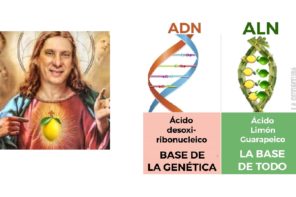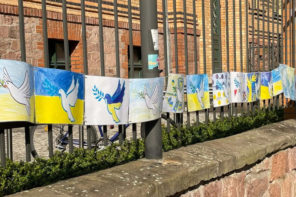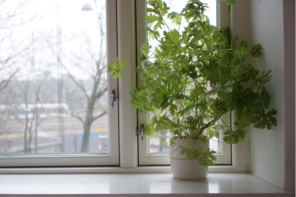The following curated collection of fragments outlines two main strategies used over the last ten years in the creation of contemporary artworks to memorialise events: subtraction and accumulation. On one side, the text investigates the potential of absence, of removal, as an agent of fair, respectful and inclusive representation in memorials for current crisis such as Covid-19 and the Fukushima disaster, on the other, it discusses accumulation by linking together different moments of memorialisation, as an attempt to represent as many people as possible affected by an event.
The risk with materialising and fixing in a monument a single narration is that one “authority” could end up imposing their memory onto a diverse group of people. Therefore, in writing about memorialisation, I feel it’s important to deploy an essay structure where the reader has a certain agency in the argument. The fragments are not elements linked by cause and effect in the assembly line of a linear thought. I want to give readers the space to reflect, to inhabit interstitial spaces linking ideas and writing. Each fragment in this collection can also work as a stand alone piece and the readers need not read them one after another.
(x – 1)
Making room, removing matter to represent
The artist Carla Levine invites a group of people to dig on a hill in Malibu to contain people’s grief. It’s August 2021. As she tells the magazine Hyperallergic , she is responding to the Covid-19 pandemic, the deaths from police violence and the Black Lives Matter (BLM) protests (Stromberg 2021). The excavation and the invitation continues for a week. A collective effort where the participants try to relieve the weight they carry inside, creating a space for their weight in the physical world outside of one’s body.
It’s 2016, the 52-year-long war between the Revolutionary Armed Forces of Colombia (FARC) and the Colombian government ends with a peace treaty in which FARC agrees to turn its military equipment over to the US government. After the weapons are melted down, they becomes part of three monuments to those killed during the war. The chosen locations for the monuments are the New York United Nations Headquarters, La Habana -where the peace negotiations were held- and Bogotá. The artist Doris Salcedo who is in charge of the Colombian monument, designs Fragmentos, a 5,000 square-foot walk-through installation that opens its door in 2018. The pavement of grey tiles on which visitors walk is made of the melted weapons—rifles, pistols and grenade launchers—mixed with steel, and shaped by women who were abused by soldiers, paramilitaries, and guerrillas during the war. Salcedo invites the survivors to hammer the melted weapons in a cathartic action, imprinting their memory on matter.
It’s 2014, Jonas Dahlberg, a Swedish artist educated as an architect, wins the competition to build a monument to the victims of the July 22 attacks that in 2011 killed 77 people in Oslo and the island of Utøya in Norway. Memory Wound, Utøya Memorial is a wound that removes, like a slice from a cake, a physical section of the island to create a channel.
September 2011, two cavities open to the public in New York: two voids designed by the architects Michael Arad and Peter Walker are where the Twin Towers of the World Trade Center once resided. They remember the absence, they memorialise September 11th.
(x – 2)
Cutting the line
“… during Passover you are instructed to remove drops of wine before drinking it to lessen your pleasure. Each drop removed represents a tragedy that befell those who went before you”
(Offill, 2020: 132).
Phone of the wind is a phone booth in Otsuchi, a coastal town northeast of Tokyo, where survivors of the 2011 Fukushima disaster can use an old disconnected rotary phone to call dead relatives and friends. It’s mourning, one person at time, the lost connection with the loved ones. The dead come into representation as an absence rather than a presence. Their loss is memorialised through the impossibility of functioning. The phone isn’t connected to any line.
(x – 3)
A statue without a shape
In her 2017 intervention The Battle Is Joined, the Trinidadian and American artist Karyn
Olivier enacted a semantic change. Instead of asking how a monument can represent everyone’s experience, she asked how it can reflect it. Olivier covered a monument at Vernon Park in Philadelphia, the Battle of Germantown Memorial (Frank Miles Day, 1903), with an acrylic encasement that turned it into a giant mirror: through reflection, the people approaching it and the neighbourhood surrounding it became the monument itself. As Karyn Olivier said in her artist statement for this project, “my reinterpretation of the Battle of Germantown Memorial will ask the monument to serve as a conductor of sorts. It will transport, transmit, express, and literally reflect the landscape, people, and activities that surround it. We will be reminded that this memorial can be an instrument and we, too, are instruments -the keepers and protectors of the monument, and in that role, sometimes we become the very monument itself” (Olivier 2017).

Detail Mellah, Salt Installation. Alessio Mazzaro 2017 (author of the picture and artwork). First day of Mellah, frame from video documentation. Alessio Mazzaro 2017 (author of the video and artwork)
(y +1)
In living memorials: more than one voice
The Zip Code Memory Project (ZCMP) is a community project initiated in 2021 and co-directed by professors Marianne Hirsch and Diana Taylor. It focuses on the Zip Code area around Columbia University in New York, and attempts to memorialise the radical, non-equal effects and losses, due to Covid-19. The ZCMP held two roundtables on Reparative Memory. In the first one, different public memorials around the world were presented and the architect Mabel O. Wilson illustrated the concept of creating an ongoing memorial about an event and the need of understanding the long-term effects of Covid-19 prior to memorialising the victims. These reflections were based on her Memorial to Enslaved Laborers (2020) in Charlottesville that honours the 4-5,000 people enslaved by the University of Virginia between 1817 and 1865. It is a circular ring of local grey granite, with a diameter of 24 meters, which varies in height and has an opening in the middle section so the visitors can walk in. It sits in the garden of the University, similar to a giant necklace, embracing the visitors with a polyphony: a cloud of 889 engraved names of enslaved people and horizontal carved marks – like wounds from a whip – for the slaves without a recorded name. In Wilson’s project, the stone remains ready to accommodate missing names of enslaved people as they are recovered by historians. Furthermore, the installation has become a site of gathering and demonstration for the University’s students and staff.
In #quererNOver, Chilean artist María José Contreras Lorenzini’s participatory collective performance from 2013, 1,210 volunteers were invited to take part in a commemoration in Santiago of the 1,210 detenidos desaparecidos, the prisoners that “disappeared” under the Pinochet regime. The performance that took place one day before the 40th anniversary of the 11th September 1973 Coup, consisted of volunteers laying down for 11 minutes in a 2 km line, from the government building – built by the military force during the dictatorship – to Placa Italia, one of the main squares of the city. Contreras Lorenzini described how the action was a response to political amnesia in Chile (Second roundtable on Reparative Memory, March 2022).
In Mexican artist Rafael Lozano-Hemmer’s project for the 2012 Habana Biennale, Last Breath, he started from the question “How do you remember somebody who is the voice of Cuba?” He asked the singer Omara Portuondo of Buena Vista Social Club to breathe into a paper bag. He then stored the air she had exhaled and used a machine for assisted breathing to inflate and deflate the paper bag. A living memorial to safeguard Portundo’s breathing even when she has died, “a machine that tries to remember her” according to Lozano-Hemmer (Second roundtable on Reparative Memory, March 2022).
(y + 2)
A personal attempt at accumulation
In 2017, during an art residency in Paris at Citè Internationale des Arts, I created walls covered in salt, a dedicated and symbolic space where the private memory of Moroccan Jews who emigrated to Paris between 1950 and 1980 was activated and shared. In this space, I invited seven witnesses – one for each day of the week – to sit in front of me and reply to three questions as a way to share their memories with me and an audience composed of relatives, members of the Jewish Sephardi community, artists, and people interested in performance or postcolonial studies. It was a living archive that evolved with the gradual accumulation of spoken stories and the connections between these stories, performed by the participants (Mazzaro 2022).
In order to document this performance, every day I proposed to a different spectator to record what was important for them, using whatever recording equipment they had to hand. Later, I edited all these filmic fragments of the performance in the documentary 5 vues sur 5 témoignages (5 views on 5 testimonies) and have shown it in different venues across France, Morocco and Canada to trigger memories and collect new stories. In particular, I went looking for the voices I felt were missing in Paris: Jewish women, Berbers, Moroccan Muslims, and the Moroccan Jew returnees. Most of the new testimonies generated by the projections were filmed and edited in two following videos, Shukran (recorded in Casablanca) and La voix feminine (recorded in in Montreal). The two new videos maintained a reflexive and recursive relationship with the documentary of the Parisian performance and they were an attempt to expand its narratives, hosting as many voices as possible to depict the different views and experiences on Moroccan Jewish migration.
(y + 3)
Databases for polyphonic global mourning
In July 2021, I was wondering if the monument(s) to the victims of Covid-19 would be virtual spaces to represent what was a global loss. Building on the lack of physicality that constitutes virtual reality, I imagined designers already thinking of a platform for global mourning to represent and freeze the absence of human beings. Not the materiality of the stone, but a globally shared online memorial where the users could have the possibility to write personal narratives to commemorate a loss, giving a polyphonic approach to the representation of the pandemic victims, connecting sorrows and experiences around the world. However, perhaps in this memorial we would not need words, but breaths. Air entering and exiting the lungs of those who have survived their loved ones. Its sound as it flows over the nostrils and it is blown out of the mouth vibrating on the lips. A (sound) breathing memorial for those who can no longer breathe. A database, a space where you can connect and record the sound of yourself breathing.
(y + 4) or (x – 4)
A gathering becomes possible
The void – given by the subtraction of the dominant narrative – can be filled with a polyphony, like the silence with protest.
While I am writing the second draft of this text at a distance of one year from the first, I came across a paper Julie Beth Napolin wrote during the Covid-19 pandemic and defined as “a sonic ensemble” and as “a piece of writing that is, by necessity, aleatory” (2020: 43). I encountered in her piece the same urgency and sensibility for a peculiar form of writing that animated me in starting this article and I’m wondering if the condition in which the pandemic put us was the cause. Confined at home wihin a disruption of “normal life” we may have found the strength and desire to try inventing more open-ended and archipelagic ways of representing our thoughts, going against a normative and chronological order. Modelling our thinking not on a line that advances from point A to point B, but on resonances, which propagates space in waves, which are reflected and refracted.
Reference list
Mazzaro, Alessio. 2022. “The potentialities of artistic practice in facilitating the collective narration of historical events”. International Journal of Heritage Studies, 28:10, 1136-1151.
Napolin, Julie Beth. 2020. “Outside In: Chorus and Clearing in the Time of Pandemic and Protest”. Sociologica, Vol 14 n2.
Offill, Jenny. 2020. Weather. London: Granta.
Stromberg, Matt. 2021.“In Malibu, a Large Hole Is Being Dug to Contain Your Grief”. Hyperallergic.com
https://hyperallergic.com/671220/in-malibu-a-large-hole-is-being-dug-to-contain-your-grief/
Olivier, Karyn. 2017. Artist statement for the intervention The Battle Is Joined.
https://monumentlab.com/projects/karyn-olivier-the-battle-is-joined
Featured image by Mari Saito









